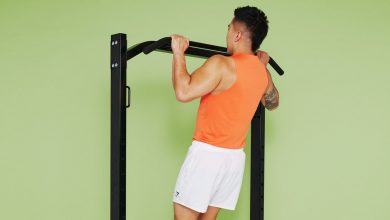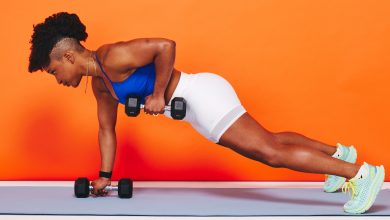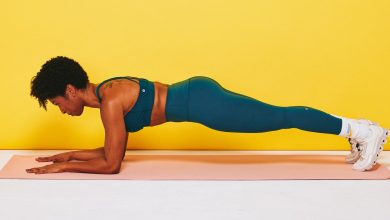This Low-Impact Cardio Workout Will Actually Get Your Heart Rate Up

The truth is, we all need a little cardio in our lives. But the good news is, it doesn’t need to look how you might think: A low-impact cardio workout can help you get all the benefits, which can be great for folks who aren’t fans of traditional forms like running or plyometrics, or whose joints get a little angry during them.
Cardio is all about challenging and strengthening your cardiovascular system (heart and lungs), and it’s a necessary part of a movement routine if you want to optimize your health. But it doesn’t have to mean running or jumping or whatever other high-impact, repetitive movement pops into your mind.
If you’re still not sold, know this: Cardio also helps you lift better, if strength training is more your jam, ACSM-certified personal trainer Asher Freeman, CPT, creator of the Nonnormative Body Club in Philadelphia, tells SELF. “Heavy lifts are like sprints, and we need good cardio fitness to get through them,” they explain. “Additionally, cardiovascular fitness can make activities of daily living easier and improve overall health.”
And if your concern is the impact on your knees, ankles, or hips, we’re here to reassure you that you can, in fact, get your heart pumping while also sparing your joints. “Biking, swimming, rowing, kettlebell flows, and using an elliptical are common examples of low-impact cardio,” Freeman says. But good old-fashioned bodyweight exercises can also be extremely effective for high-intensity, low-impact cardio—if you do a couple of simple yet impactful things first.
First: Go hard and limit rest. You can add intensity by doing more work—say, performing an exercise for a longer period of time or adding in more reps to the same duration so you’re moving quicker—and decreasing the length of time between sets or rounds, Freeman says.
Second: Focus on compound exercises that engage multiple large muscle groups at once. For example, think about a curtsy lunge. If you’re just doing the lunge part—a great exercise in its own right—you’ll feel your heart rate increase a bit. But if you add in a side kick at the top of the movement, you’ll notice that you lose your breath much quicker.
By focusing on low-impact cardio exercises, you can put less force on your joints, which is a must for anyone with past or current injuries, Freeman notes. Even if your knees and ankles perform well under pressure, it’s a good idea to vary up your workouts every now and then—both to keep things interesting, and to make sure your joints don’t get too much repetitive stress (read: force from the same motion over and over and over again) and continue to stay healthy for the long haul.
The workout Freeman created below works your entire body—legs, glutes, abs, arms, shoulders, and yes, your cardiovascular system—without putting much impact on your joints. “You should never be coming into contact with the ground with any more force than you do when walking,” they explain. “Still, you’re moving your body from the floor to standing in between exercises and performing full-body movements during each exercise with little to no rest, so your heart has to work hard.”



